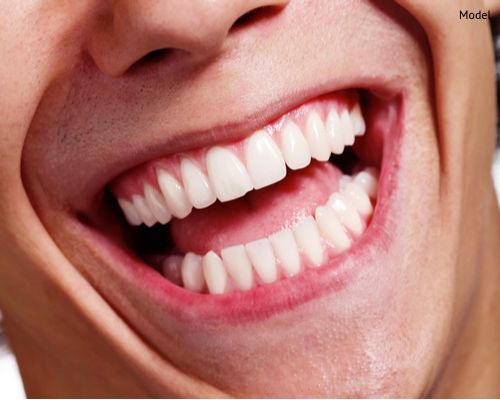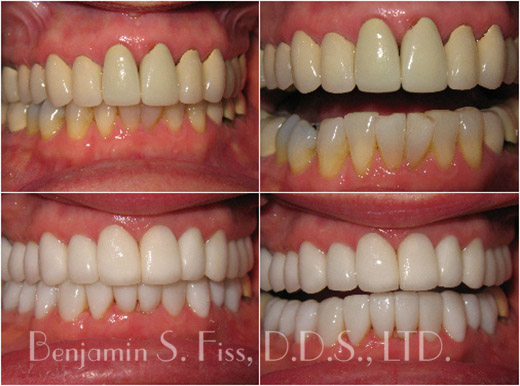Why Are Porcelain Crowns Better?
The placement of a full-coverage crown returns the complete functionality of a once-damaged tooth. Crowns can also provide the replacement of a single tooth through a bridge, a device that fills in a missing tooth by latching a custom-fit crown to two adjacent teeth.

Close up shot of awesome healthy teeth
There are many options when choosing the crown that will cover and protect a fractured or damaged tooth, but the most common choices are either all-porcelain crowns or porcelain-fused-to-metal crowns.
Since it can be challenging to know which is better for you, many people choose the more cost-effective option: the porcelain-fused-to-metal option. But is that really the better choice?
While the porcelain-fused-to-metal crowns are not without their merit, they also have their limitations, and many patients decide after doing their research that the all-porcelain route is the best way to go.
Improved Aesthetics
Crowns were once made entirely of metal. This made them easily noticeable, aesthetically displeasing, and problematic for patients with metal allergies. Fortunately, this is no longer the case. Now, crowns are available that are made entirely of durable, pressable ceramics.
Porcelain-fused-to-metal crowns have a metal alloy interior with a thin covering of porcelain around the top and down the sides. While at first glance this option appears natural, the porcelain does not extend to the bottom of the tooth.
Therefore, many patients are bothered by the sight of a gray or black line at the gum line. This line is worsened by receding gum lines, which will cause the metal to become increasingly more noticeable.
Porcelain-fused-to-metal crowns do not transmit light the same way your natural teeth do, making them appear dull and less-natural than the alternative.
All-porcelain crowns transmit light just as a natural tooth would, restoring a more natural look to your smile. All-porcelain crowns are ideal for any teeth that are easily visible.
Reliability and Safety
The idea of putting metal in the mouth has come under increased scrutiny in recent years. Many patients are choosing to rid themselves of all traces of the material.
While there is no irrefutable proof the metal in dental restorations leads to serious health concerns, it is a possibility that can be avoided with an all-porcelain option.
Going beyond these fears, other patients find that they are allergic to metal, grind their teeth at night, or that the metal crowns irritate their gums. In these cases, all-porcelain crowns a more comfortable alternative.
Long Lasting
Some people assume that because all-porcelain crowns are not as strong as the partially metal option, which means they will not last as long.
This is not true.
All-porcelain crowns last as long as porcelain-fused-to-metal crowns, which is between 10 and 15 years on average, given that no damage has occurred.
Any crown—whether it is an all-porcelain or porcelain-and-metal option—functions like a natural tooth, which means they are at risk of chipping or breaking. Patients should practice caution when chewing hard candies, ice, or super-sticky foods regardless of which crown they have.
Are There Any Negatives to All-Porcelain Crowns?
There is no drawback to having all-porcelain crowns. They provide equal strength and pricing for an aesthetically superior product.
Advances in dental technology are still continually being made, and the porcelain materials used are becoming a stronger and more durable option every day.
For more information about all-porcelain or porcelain-fused-to-metal crowns, contact Dr. Fiss by calling (312) 642-6631 or by filling out our online contact form.
